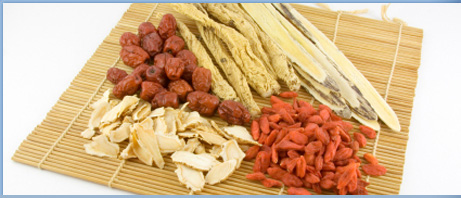|
Traditional Chinese medicine (TCM) utilizes theories and principles that date back nearly 3000 years.
TCM is a gentle, effective and safe method of holistic healing that works on the physical, emotional and psycho-spiritual levels.
TCM includes the modalities of acupuncture, Chinese herbal formulas, acupressure, energetic exercise, such as Tai Qi and Qigong, and dietary advice.
Chinese medicine is the oldest professional, continually practiced literal medicine in the world.
This medical system’s written literature stretches back almost 2,500 years.
Currently, ¼ of the world’s population uses it. One can say that modern Western and
traditional Chinese medicines are the two dominant medical systems in the world today
Chinese medicine works by re-establishing balance and harmony within the body.
This means balance between yin and yang, balance between the five phases, balance between Qi (energy), blood and body fluids.
This balance is re-established by supporting the body’s healthy or righteous energy and attacking any unhealthy or evil energy.
Practitioners of Chinese Medicine diagnose what is out of balance in a person’s body by employing four basic examinations.
The first is questioning about one’s signs and symptoms, medical history and disease.
The second is visually inspecting the face, body and especially one’s tongue and its coating.
The third is listening to one’s voice and the sound of one’s breathing as well as smelling any odors emanating from one’s body.
The fourth is palpating various areas of the body, especially the pulse at both wrists.
Using a combination of one’s signs and symptoms, tongue diagnosis and pulse diagnosis,
the practitioner can determine the pattern of disharmony which requires re-balancing.
In China, there are over 3,200 herbs, 300 mineral and animal extracts, and over 400 formulas used.
Herbal formulations may consist of 4 to 12 different ingredients, to be taken in the form of teas, powders, pills, tinctures, or syrups.
It can treat a wide variety of symptoms while stimulating the body’s natural healing process.
Chinese herbal medicine may include vegetable, animal and mineral ingredients, however the majority of ingredients are from vegetable sources,
leaves, flowers, twigs, stems, roots, tubers, rhizomes and bark are among the parts of the vegetable used.
The liquid forms tend to be more potent. Most of the components of Chinese herbal medicine have a very low toxicity compared to even common,
over-the-counter Western drugs. When they are prescribed according to correct Chinese medicine diagnosis, they should have few,
if any, side effects, only beneficial healing results.
Dr. Zhu uses raw herbs or granules (5x the strength of raw) or herbs in pill, capsule or powdered form.
Dr. Zhu has over 100 raw herbs to choose from in creating a formula tailored for the individual patient’s needs.
These herbs are then made into a tea by the patient using the directions provided by doctor.
The same formula can be created with the granules, again being developed by the doctor and used as a tea.
There are also herbal pills, tinctures and powdered extracts for those who do not have the time or taste for drinking the more traditional liquid form.
The liquid forms tend to be more potent.
Chinese herbal medicine treats the full range of human disease. It is used to treat:
- Acute diseases like intestinal flu and the common cold.
- Chronic diseases such as allergies, gynecological disorders, autoimmune diseases, chronic viral diseases.
- Degenerative diseases due to aging
Chinese herbal medicine is especially good for promoting the body’s ability to heal and recover from illness
|

